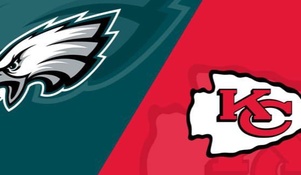Super Bowl Ad Release Strategy: What is the right approach?
As the Super Bowl ads dropped this week, I found myself thinking a lot about why brands release Super Bowl ads early, sometimes more than a week before the game. I had a compelling debate with some of my classmates about this prior to the game. Interestingly enough, I was lucky to be involved in these conversations with a client of mine last year during strategic planning sessions for the release of their Super Bowl 50 ad. It was an exciting, educational, glimpse into the world of strategic planning for a Super Bowl ad.
There are many reasons why brands choose to drop ads early. The obvious ones are to maximize exposure, earned media, and paid media. There are also some studies that examine the correlation between length of airtime before the Super Bowl and Ad Meter ratings by consumers. Some studies show that ads perform better when they’ve been seen more than once during the big game.
Another reason that brands choose to release ads early is to control the initial narrative around their ad premier. For example, my former client often tried to keep their Super Bowl ads a secret up until the big game. However, during their annual meeting prior to the big game, employees would get a sneak preview. Doing this without launching the ad early could lead to employees recording the ad on their phone and posting a grainy, shaky, video on their personal social channels. Not only does this ruin the narrative and excitement of releasing a new ad on a planned medium, but it does a huge disservice to the actual creative work.
Ultimately, I think the decision to release an ad early is a tough one with a lot to consider. A few things that brands should consider as they begin planning for Super Bowl ads are:
[Snickers Super Bowl Commercial 2017 Adam Driver]The creative: What story is the brand trying to tell? Is it something that will inspire and entertain in just one viewing? Or will it require a few times to truly understand the message? The Snicker’s Live commercial during Super Bowl LI is a perfect example of this. We didn’t really understand what happened until after Snicker’s and Adam Driver posted “apologies” on Twitter.
The brand: Big, global, brands like Anheuser-Busch, T-Mobile and Audi are sure to get a ton of earned media by dropping ads early, regardless of the quality and story of the ad. However, even though AdWeek posted a story featuring all 36 Super Bowl ads that were released early, most of them did not get a high volume of additional earned media.
[SB Commercial: Einstein's Violin]The placement: NatGeo’s “Genius” ad, which featured Albert Einstien playing a Lady Gaga tune on the violin, was released early and garnered a fair amount of earned media. When it played right after the halftime show, picking up “Bad Romance” where Gaga had left off, the impact was much more powerful than the early releases. In this case, an early release didn’t totally do the creative justice.
It’s hard to truly enjoy commercials, being a resident “marketing geek”. Instead of just laughing or, let’s be honest, crying, I find myself Googling the good ones. I want to know which creative agency is behind each concept and any quotes from brand executives on the strategic approach. I find myself analyzing the ad in relation to the broadcast to see if I can determine the target demographic. I continue to seek the knowledge of those who are doing it well. Throughout the rest of my MBA journey, and beyond, I’ll take all of these observations with me and someday, I’ll have the perfect formula for Super Bowl advertising success. Until then, I’ll just get back to my finance homework.



